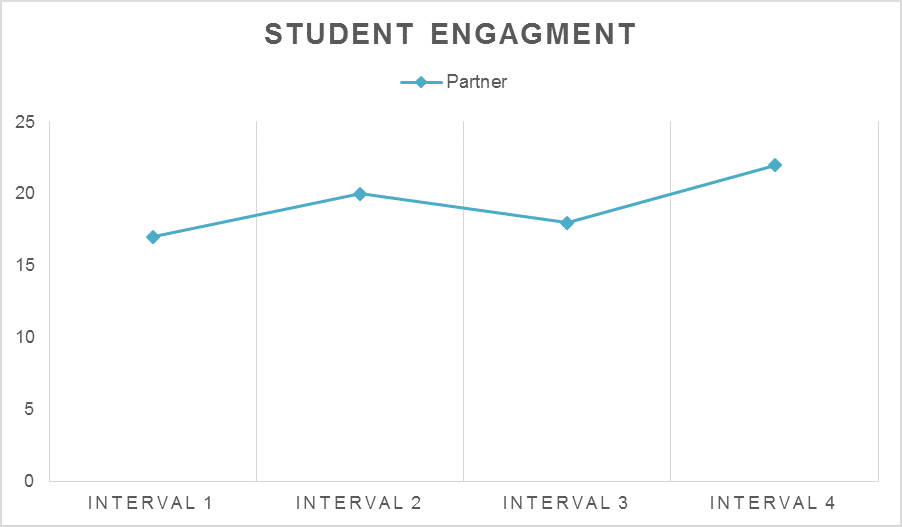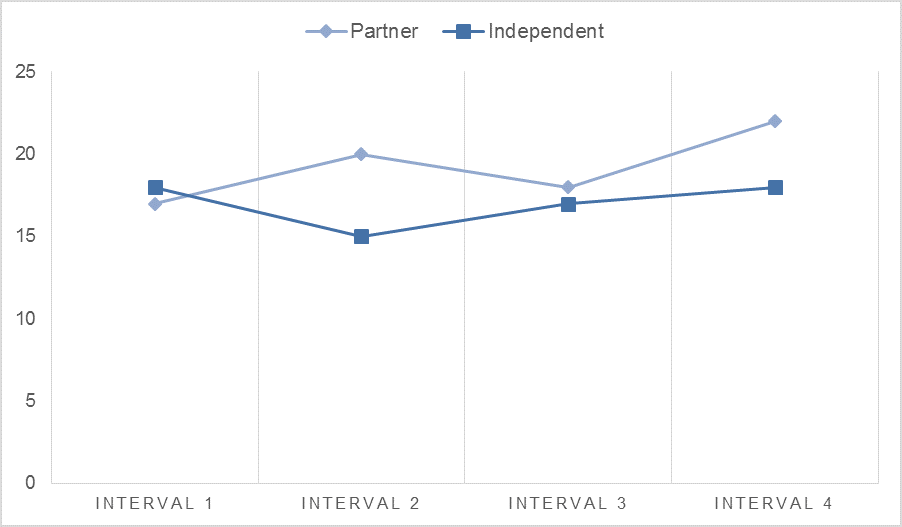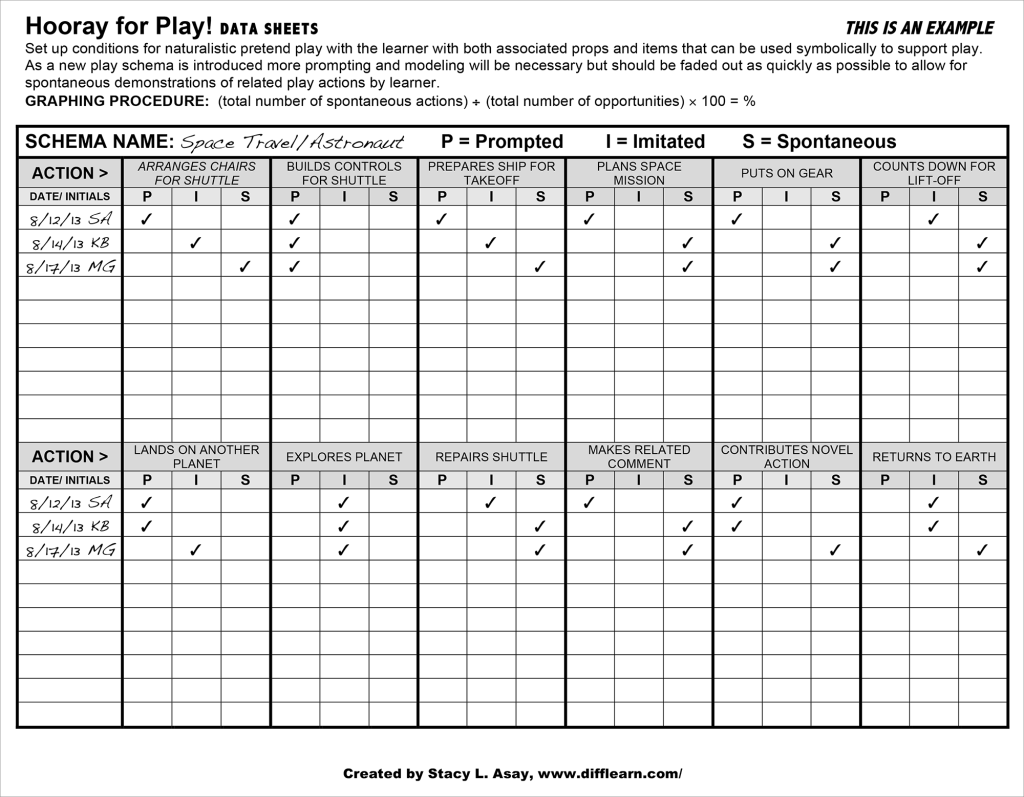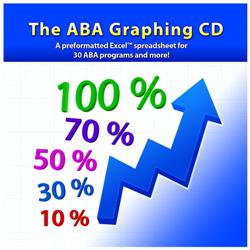This month’s ASAT feature comes to us from Karrie Lindeman, EdD, BCBA-D, LBA and David Celiberti, PhD, BCBA-D. To learn more about ASAT, please visit their website at www.asatonline.org. You can also sign up for ASAT’s free newsletter, Science in Autism Treatment, and like them on Facebook!
Save 20% on ABA Tools of The Trade and our Tools of the Trade kit now through June 17th!
Data collection is the core of the success of our science. Without data, are we are not providing behavior analytic service to our clients; however, data collection can be a scary new journey for many. What do I collect? How do I collect it? What do I put it on? How do I manage the other children in the class? What do I do with the data once I have it? How do the data guide my decision-making? All of these questions pose roadblocks to the individuals attempting the collection.
To date, many training manuals and books have attempted to provide insight and guidance for struggling data-collection newbies. Some of these books have fallen short of delivering a clear and concise message to its readers. ABA Tools of the Trade provides a unique take at explaining the what, why, and most importantly, the “how-to” of data collection.
The authors start off describing the purpose of the book, addressing concerns that teachers and technicians face in the field every day: Why am I doing this? And how can I create easy to navigate data sheets with simple graphs for analyzing after I have collected the data? ABA Tools of the Trade breaks down their material into five sections which simplify the anatomy of a data sheet, review different types of data collection systems available, discuss how to utilize them with simple behavior change procedures, and offer activities to ensure supervisees are competent (huge bonus!). Throughout the sections, the material is organized in a way to help you identify exactly what you need to do, with helpful vignettes providing real-world examples.
The breakdown of the five sections allows the reader to easily find the information they are looking for, along with supporting documents. The first section delves into the Anatomy of Data Collection, describes not only why we collect data, but how to do so in the most simplistic way. This section is great for someone new to data collection or looking to expand their practice. A bonus includes describing different tools that may be helpful in your data collection journey with informative descriptions and visuals. Examples include tally counters, interval timers, and time timers, to name a few. A useful hints page highlights how the specific tools can be matched to the different measures of behavior that need to be tracked.
The second section is the Data Collection Systems section, which describes more complex systems and strategies that work in different settings. It starts off with a comprehensive list of 10 rules of data collection. These rules are extremely important as they lay the groundwork for ethical data collection and reviews potential issues that may arise as you begin to collect data. These include examples of consent issues, confidentiality mishaps, and an important reminder to adhere to state and local laws. Finally, a handy task analysis of data collection steps provides a simple way for readers to grasp the needed components for specific targeted behaviors and wraps up the section.
The third and fourth sections include Behaviors and Simple Behavior Change Systems, which describes the Functional Behavior Assessment and Behavior Intervention Plan process in user-friendly terms. This is a great introduction for those starting out and looking to brush up on appropriate procedures. This section reviews what qualifies as efficient data collection in an FBA and how to analyze results. An added bonus is the discussion on antecedent strategies, which provides the reader with tactics and corresponding examples. Following the breakdown, vignettes of very specific behavioral episodes are provided, which allow the reader to apply the knowledge derived from the reading in everyday situations. Each vignette is followed by a general solution and helpful hints on dealing with the presented issue. For those interested in learning more about the topic, references and recommended readings are provided after all examples. Great source!
The fifth and final section, Supervision Practices, is a bonus for those supervising candidates for board certification in behavior analysis. It is comprehensive, well organized, and synched with the 5th Edition of Task List providing not only lessons but scenarios for practice with corresponding rubrics. Please note, as the Task List is updated, the alphanumeric codes may change. Three phases are addressed:
- The Pre-Data Collection Phase addresses information gathering from parents and professionals surrounding prior attempts to address behavior (what was implemented and for how long) including defining behavior and determine how best to measure it.
- The Data Collection Phase involves implementing the data collection system and making timely modifications, as well as proper training of the data collectors and determining an adequate schedule. Interobserver agreement is also addressed.
- The Post-Data Collection Phase involves reviewing the collected data, preparing for graphic representation, and using data-based decision making.
Given that many newly credentialed BCBAs are assuming a supervisory role for the first time, this section is very helpful. Learning objectives and activities for each lesson are clearly articulated and rubrics are provided to support application and assess the skill level of the supervisee.
This short, well-organized, and easily-accessible resource belongs on the shelves of those first working towards BCBA certification, BCBAs who are starting out, and current BCBAs providing Registered Behavior Technician and BCBA supervision. The content spans all data collection needs, from the very basics on how to ensure those we supervise understand and demonstrate necessary skills from the Task List. It would also be a practical, yet easy supplemental read for students progressing through their coursework in college programs. To maintain quality service, it is imperative to ensure the next generation of BCBAs have the skills necessary to provide and supervise quality service provision. The inclusion of sections related to modifying one’s behavior as well as supervisory considerations only strengthen the utility of this already informative guide. This book is a great resource, and recommended without reservation!
About The Authors
Karrie Lindeman completed her undergraduate degree at C.W. Post University with a major in psychology. She went on to Queens College to complete her Masters in Psychology and advanced certificate in Behavior Analysis. From here, she worked in a school for children with autism for 10 years before moving on to consult in the public school and early intervention setting. Karrie completed her doctorate in learning and teaching at Hofstra University in 2015. She continues to provide direct service, parent training, and consultation in a variety of settings. Karrie is currently the Program Director of the Behavior Analysis program at Touro College in New York City.
David Celiberti, PhD, BCBA-D, is the Executive Director of ASAT and Past-President, a role he served from 2006 to 2012. He is the Co-Editor of ASAT’s monthly publication, Science in Autism Treatment. He received his PhD in clinical psychology from Rutgers University in 1993 and his certification in behavior analysis in 2000. Dr. Celiberti has served on a number of advisory boards and special interest groups in the field of autism, applied behavior analysis (ABA), and early childhood education. He works in private practice and provides consultation to public and private schools and agencies in underserved areas. He has authored several articles in professional journals and presents frequently at regional, national, and international conferences. In prior positions, Dr. Celiberti taught courses related to ABA at both undergraduate and graduate levels, supervised individuals pursuing BCBA certifications, and conducted research in the areas of ABA, family intervention, and autism.







